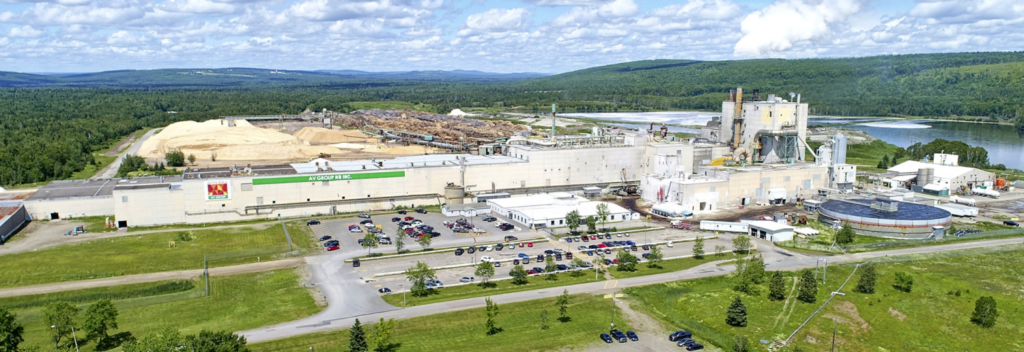Nackawic is a town located 65 km west of the city of Fredericton on the east bank of the Saint John River in New Brunswick, Canada. The town occupies an area of about 9 km² and is surrounded by the parishes of Southampton and Queensbury with the Village of Millville 10 km to the north. Nackawic is centered on the intersection of Route 105 and Route 605. Take a look below for 19 fun and amazing facts about Nackawic, New Brunswick, Canada.
1. The area was first settled in 1784 by the United Empire Loyalists, primarily through land grants to the families of soldiers who had fought with His Majesty’s Regiment of Queen’s Rangers during the American Revolutionary War.
2. Previously known as Otis, the development of New Brunswick’s newest village, as it exists today, began in the late 1960s and was built so those forced to relocate as the result of the Mactaquac Dam being constructed would have a place to reside.
3. Construction of the pulp mill, built to employ these displaced persons who lost their traditional farming opportunities that came with the Dam, occurred between 1967 and 1970.
4. Nackawic was officially incorporated as a town in 1976.

5. Nackawic is home to the World’s Largest Axe.
6. The town’s largest employer, from 1970 until September 14, 2004, was St. Anne Nackawic Pulp Company Ltd., founded by Karl F. Landegger.
7. The mill closed on September 14 and its owners declared bankruptcy the following day, putting 406 people out of work.
8. About 350 contract workers in the middle of a maintenance shutdown were also affected. The mill itself was left in a state of disassembly.

9. Construction of the mill began in 1967, following the building of the Mactaquac Dam. The plant manufactured high-quality, photographic grade kraft pulp.
10. Increasing energy, material and labor costs here at home; new competition from overseas mills able to operate much less expensively as well as the continuing devaluation of the US dollar, combined with the rapid increase in value of the Canadian dollar, all contributed significantly to the St. Anne Nackawic plant becoming less viable.
11. At the same time, the provincial government had been undertaking a reorganization of Crown timber lands in New Brunswick in recent years which was rumored to include a reduction in the timber harvest for the St. Anne Nackawic mill. Additionally, the rise in use of digital cameras and resulting decline in the use of photographic paper had reduced the demand for St. Anne Nackawic’s product.
12. It was revealed during bankruptcy proceedings that St. Anne Nackawic Pulp Company Ltd. owed $101.2 million to its creditors, including $50.2 million to unsecured creditors. It was also learned that the company-funded employee pension plans were under-funded, as allowed by law. Employees under the age of 55 were informed that it was unlikely that they would receive any pension benefits.

13. The Government of New Brunswick later stepped in and, faced with an extremely difficult decision, created a new distribution model that would see the pension fund shared by all employees, including those in the under 55 group. Understandably, those receiving pension benefits prior to the mill’s closure were outraged at the thought of being forced to give up a portion of their pension so that the under 55 group would to have at least something to look forward to during their golden years.
14. The loss of pension benefits and the perceived unfairness of distribution sparked an outcry for the provincial government to intervene. Legal action against the Province resulted and as of July 2007, retirees and other employees still do not know what the final outcome of the pension situation will be.
15. George Landegger, chairman and CEO of Parsons & Whittemore (later acquired by Georgia-Pacific) of Rye Brook, New York, which was the holding company that owned St. Anne Industries which in turn owned St. Anne Nackawic Pulp Company Ltd., was responsible for ordering the shutdown. Having been unable to secure a traditional lending institution after its Bank loans were called in 2001, St. Anne Industries, in an effort to continue the operations at Nackawic, replaced the Bank and thus became the primary secured creditor of the St. Anne Nackawic mill.
16. Many persons impacted negatively by the closure, either uninformed or unwilling to accept the cold, harsh reality of the situation, were unable to comprehend how the primary secured creditor could rightfully receive the funds to which it was entitled – enjoying the same right as the Bank in similar proceedings. Parsons and Whittemore later agreed to relinquish title to the plant and equipment, and at the same time shedding its officers and directors of their personal liability environmental – a rather serious matter that transcends all Bankruptcy law, allowing the provincial government to seek a buyer for the facility.

17. On July 21, 2014, a man drove his pickup truck into the municipal building, which housed the town hall and the fire hall.
18. The man was arrested by the RCMP. One fire official estimated cost of damage to the departments trucks to be $1.5 million.
19. Local business people, community leaders and other economic development groups form the Nackawic Region Economic Development Team designed to encourage and assist business development in the Nackawic and Mactaquac Headpond area. Nackawic also has membership in the South West Development Corporation.




